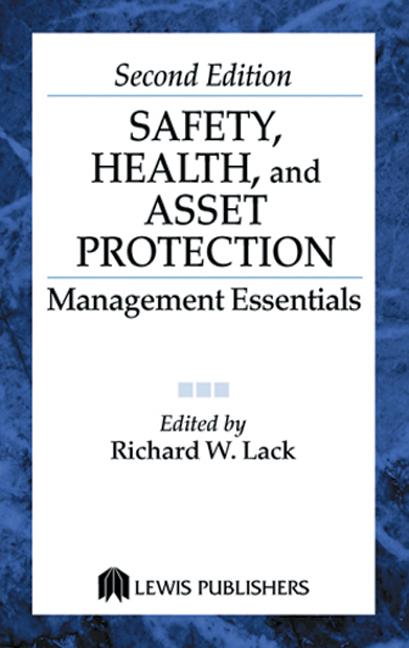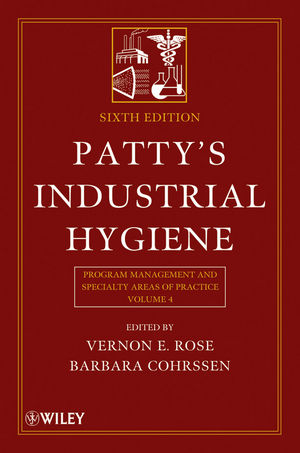Be it great fires, floods due to heavy rain or IT outages due to hacker attacks: When it comes to crisis management, federal and state governments as well as cities and municipalities with blue-light organizations are all in the same boat, metaphorically speaking. Industrial companies also have to plan and prepare for emergencies in order to secure production and business processes and minimize economic losses. Effective structures, well-trained people and powerful technology have to be closely enmeshed to ensure that the right decisions are made in the event of an emergency. From November 5 - 8, A+A 2019, International Trade Fair with Congress for Safety, Security and Health at Work, presents new approaches and current trends on this topic in Düsseldorf, Germany.
During the great fire of Notre Dame, all of Europe held its breath. In Paris, the fire brigade was able to limit the fire in the cathedral to the wooden truss after about four hours and thus saved valuable works of art and the rich interior, despite damage due to heat, soot and extinguishing water.
“An achievement that was only possible thanks to the Paris fire brigade’s organized crisis management,” says Raimund Bücher, Director of Fire Brigade at Henkel in Düsseldorf. “The size of the object was certainly a particular challenge. In addition, knowing that irreplaceable cultural goods were at risk required special protective measures. Thank goodness the entrances had already been closed when the fire broke out, as this meant that no-one was hurt in this disaster.”
Equipped for complex requirements
Effective crisis management, as seen during this event, requires a perfectly coordinated team with a transparent leadership structure, modern safety equipment and powerful technical aids.
“We aim to prepare people for emergencies, even if no-one can be prepared for every possible situation,” says Norbert Jetten, Head of Technology at BYK-Chemie in Wesel. “The requirements are quite complex: At the end of the day, we need to be just as able to deal with a fire or substance release as with hacker attacks or the effects of a natural catastrophe.”
Clearly defined tasks
For this, it is vital to have a team in which each member knows exactly what to do. “Depending on the size of the company, clearly defined functional areas or specialist departments are involved,” says Stephan Hummel, Head of Fire Protection at Currenta. The company manages and operates CHEMPARK with three locations in Germany: Leverkusen, Dormagen and Krefeld. They have defined who passes on information, both internally and externally, and have also determined the analysis of the event. What dangers does the situation present for people and the environment, which area is affected, what is the prognosis — these are all questions that need to be answered as fast as possible in these situations. And measures such as warning and informing the public, planning the emergency response and providing the necessary personnel and technical resources all depend on the answers.
At A+A 2019 in Düsseldorf, five short presentations will focus on crisis management. They address, among other issues, the meaning of emergency response for small, mid-sized and large companies, the topic of digitalization and the role of social media as part of crisis communications. At the GFPA German Fire Protection Association stand, experts will be on hand to engage in dialogues with professional visitors. Among others, Currenta, Henkel and the Industrial Fire Protection Association of Germany will be present.
Multi-user locations are increasingly recognizing the advantages of being closely interconnected. Large companies like Currenta connect different locations to several security centers. Identical IT programs facilitate communication, while procedures and processes that have been aligned with one another help maintain an overview of the situation. Services are further optimized with the aid of state-of-the-art control center software, allowing users to fulfil their statutory reporting obligations even more quickly in future and to streamline organizational processes as well as the entire information and emergency management.
Robotics, drones, modern fire engines
When the sites of fires or natural catastrophes become too dangerous for humans, robots come in handy. As they did during a fire in the marl caves south of Maastricht in July 2017. A farmer had stored hay there, which had caught fire. As there was a risk of the caves collapsing, helpers were unable to enter. The fire brigade in Aachen contacted the CHEMPARK site fire brigade in Leverkusen to request the Manipulator, a remote-controlled robot. This special device provided essential images from inside the caves, which gave the fire brigade an overview of the fire.
Drones also play an increasingly important role in the evaluation of an event or in the continuous monitoring of plants. “They allow us to quickly and easily take pictures at great heights or in areas that are difficult to access,” explains Joachim Beyer, Head of Security at Currenta-CHEMPARK & Safety (CPS). “We regularly use drones for inspection flights and to obtain thermal images. These in turn help us collect data with which we can optimize our plants.”
Germany’s first turbine fire engine will be in use at Currenta at the end of 2019. A high-performance engine produces a fine extinguishing mist that sprays up to 150 meters and is intended specifically for providing aid in industrial fires in the chemicals industry. “It achieves the same results with less extinguishing agents and less water — this contributes to more sustainability and improves the fire brigade’s performance,” states Stephan Hummel.
Digital aids and autonomous technologies
Digitalization increasingly helps us determine the causes of crises. According to a 2019 survey conducted by the Crisis Navigator — Institute for Crisis Research, part of the University of Kiel (Krisennavigator — Institut für Krisenforschung, ein Spin-off der Univeristät Kiel), crisis managers are increasingly dealing with data integrity breaches, blackouts, IT outages as well as public backlash and online protests. At the same time, more and more digital products and technologies open up new opportunities for providing extensive information and optimized organization.
In the event of an evacuation, for example, onsite fire brigades have to be sure that everyone has left the site. Only when this has been confirmed can they fully start fire-fighting measures, for example. To do so, Currenta relies on a new, electronic logbook that registers when employees enter or leave the works premises. This is recorded quite simply via a digital system that requires each employee to hold a special identification card up to a reading device. This procedure has been in place at CHEMPARK Dormagen since December 2018.
New digital tools allow users to quickly achieve — and maintain — information superiority. Pre-stored text modules allow users to create press releases within minutes. With the aid of alarm servers, crisis unit members can be notified by mouse click.
“The future promises autonomous drones that can independently probe a situation,” forecasts Hummel. “Self-driving vehicles will allow us to evaluate information as soon as we are on our way to the emergency location, saving valuable time. And artificial intelligence is sure to open up whole new potential, such as exploration systems.” Exoskeletons — stabilizing and power assisting elements — promise improved protective functions and new options of use, such as lifting larger loads.
And sometimes, colored pens and paper are all you need: When handling disasters, conventional aids continue to play an important role. “Paper and colored markers are still immensely popular,” says BYK-Chemie Head of Technology Jetten. “Anyone can use them and they still work, even if the power’s out. Where are the servers located that are under threat from cyber attacks, which areas are at risk during fires or in the event of substance release, where do the water, sewage or electricity pipes run. Visualizing is of central importance, as this way, everyone can see at a glance what effects an event may have on the site or its surroundings.” The communications that are based on the situation image are also important and must be clear, comprehensible and without speculation. After all, a specialist for communications must be able to immediately understand a statement just as well as an IT or environmental expert.
New obligations for SMEs
The draft of the new DIN ISO standard 22320 (Security and Resilience — Emergency Management — Guidelines for Incident Management), which was submitted in August 2018, requires small and mid-sized companies to fulfil obligations with regard to crisis management, too. “In future, businesses that would like to obtain certification will have to prove a corresponding organizational structure and employ qualified staff,” says Henkel’s Director of Fire Brigade, Raimund Bücher. “This of course means they need to have the necessary budgets.”
The human risk factor
When danger sends adrenaline shooting into our blood, our actions are impaired. Our brains seem to become sluggish — rational thoughts are no longer possible, our memory performance flags and deliberate actions are difficult. The more times a person has been through this, the quicker they can bridge this chaotic phase. “Continuous drills train routines, which we can then access quickly in the event of danger,” says Jetten. Which is why he and his colleagues rely on what he calls circuit training. This means realistic drills with various requirements that have been set up on the works premises. “The changing roles within the individual positions sharpen our awareness of the different perspectives people have in the exact same situation. It allows us to stage everything as realistically as possible—with the police, fire brigade and emergency responders.”
Raising public awareness
However, crises are not restricted to the work area. “Standards, legislation and internal drills alone don’t cut it. It is extremely important to raise public awareness, so that they react adequately in an emergency,” emphasizes Raimund Bücher. Which is why North Rhine-Westphalia introduced a state-wide alert day in 2018. On alert day, the sirens are tested and trial alert notifications are sent out, for example using the Nina alert app, the federal emergency information and notification app (Nina stands for Notfall-Informations- und Nachrichten App, emergency information and notification app).
Drills are carried out across regions, as well. “LÜKEX stands for ‘Länderübergreifende Krisenmanagementübung’ (cross-state crisis management drill),” the expert explains. “The realistic drills aim to improve the management of national crises.” This involves organizations at the governmental and state level. In addition, the fire brigade and organizations such as the German Red Cross (Deutsche Rote Kreuz, DRK), the Maltese Help Organization (Malteser Hilfsdienst) and the ASB Workers’ Samaritan Federation are important helpers in informing the broader public.
Crisis management — a topic with seemingly endless facets. At A+A 2019, International Trade Fair with Congress for Safety, Security and Health at Work (in Düsseldorf, Germany from November 5 – 8, 2019), experts are on hand to answer questions and engage in discussion. Because one thing is certain: we can only manage crises if we are willing to find solutions together.
For information about A+A 2019: http://www.aplusa-online.com





